- Angular Command Line
- Angular Commands Cheat Sheet Free
- Yahoo Fantasy Football Cheat Sheets
- Angular Cheat Sheet Pdf
- Angular Commands Cheat Sheet Pdf
Angular CLI Cheat Sheet ng new # To create a new project ng serve # To host the project on 4200 port ng serve -port -host # To host application specific host/port. If any point in time you need more clarity on angular cli commands please refer document. Angular CLI Cheat Sheet ng new # To create a new project ng serve # To host the project on 4200 port ng serve -port -host # To host application specific host/port. We can use a short alias as well: ng s -p.
License
The MIT License (MIT)
Copyright (c) 2014 Wes Cruver
Permission is hereby granted, free of charge, to any person obtaining a copy of this software and associated documentation files (the 'Software'), to deal in the Software without restriction, including without limitation the rights to use, copy, modify, merge, publish, distribute, sublicense, and/or sell copies of the Software, and to permit persons to whom the Software is furnished to do so, subject to the following conditions:
The above copyright notice and this permission notice shall be included in all copies or substantial portions of the Software.
THE SOFTWARE IS PROVIDED 'AS IS', WITHOUT WARRANTY OF ANY KIND, EXPRESS OR IMPLIED, INCLUDING BUT NOT LIMITED TO THE WARRANTIES OF MERCHANTABILITY, FITNESS FOR A PARTICULAR PURPOSE AND NONINFRINGEMENT. IN NO EVENT SHALL THE AUTHORS OR COPYRIGHT HOLDERS BE LIABLE FOR ANY CLAIM, DAMAGES OR OTHER LIABILITY, WHETHER IN AN ACTION OF CONTRACT, TORT OR OTHERWISE, ARISING FROM, OUT OF OR IN CONNECTION WITH THE SOFTWARE OR THE USE OR OTHER DEALINGS IN THE SOFTWARE.
Angular CLI is a command line interface tool which is used to initialize, develop, scaffold, and maintain Angular applications. You can use these command directly on command prompt or indirectly through an interactive UI i.e. Angular Console.
| Command | Alias | Description |
|---|---|---|
| add | It is used to add support for an external library to your project. | |
| build | b | It compiles an Angular app into an output directory named dist/ at the given output path. Must be executed from within a workspace directory. |
| config | It retrieves or sets Angular configuration values in the angular.json file for the workspace. | |
| doc | d | It opens the official Angular documentation (angular.io) in a browser, and searches for a given keyword. |
| e2e | e | It builds and serves an Angular app, then runs end-to-end tests using Protractor. |
| generate | g | It generates and/or modifies files based on a schematic. |
| help | It provides a list of available commands and their short descriptions. | |
| lint | l | It is used to run linting tools on Angular app code in a given project folder. |
| new | n | It creates a new workspace and an initial Angular app. |
| run | It runs an Architect target with an optional custom builder configuration defined in your project. | |
| serve | s | It builds and serves your app, rebuilding on file changes. |
| test | t | It runs unit tests in a project. |
| update | It updates your application and its dependencies. See https://update.angular.io/ | |
| version | v | It utputs Angular CLI version. |
| xi18n | It extracts i18n messages from source code. |
ng add Command
The ng add command is used to add support for an external library to your project. It adds the npm package for a published library to your workspace, and makes your default app project to use that library, in whatever way is specified by the library's schematic. For example, if you add @angular/pwa, then it will configure your project for PWA support.
The default app project is the value of defaultProject in angular.json.
Syntax:
Parameter Explanation:
<collection>: It specifies the package which you want to add.
Options
--defaults=true|false: When true, it disables interactive input prompts for options with a default.
--help=true|false|json|JSON: It is used to show a help message in the console. Default: false
--interactive=true|false: When false, it disables interactive input prompts.
ng build Command
The ng build command is used to compile an Angular app into an output directory named dist/ at the given output path. It must be executed from within a workspace directory.
Syntax:
Parameter Explanation:
<project>: It specifies the name of the project to build. It can be an app or a library.
Options
--aot=true|false: It builds using Ahead of Time compilation. Default: false
--baseHref=baseHref: It specifies the base url for the application being built.
--buildEventLog=buildEventLog: (experimental) Output file path for Build Event Protocol events.
--buildOptimizer=true|false: It enables '@angular-devkit/build-optimizer' optimizations when using the 'aot' option. Default: false
--commonChunk=true|false: It uses a separate bundle containing code used across multiple bundles. Default: true
--configuration=configuration: A named build target, as specified in the 'configurations' section of angular.json. Each named target is accompanied by a configuration of option defaults for that target.
Aliases: -c
--deleteOutputPath=true|false: It is used to delete the output path before building. Default: true
--deployUrl=deployUrl: URL where files will be deployed.
--es5BrowserSupport=true|false: Enables conditionally loaded ES2015 polyfills. Default: false
--extractCss=true|false: It is used to extract css from global styles into css files instead of js ones. Default: false
--extractLicenses=true|false: It is used to extract all licenses in a separate file. Default: false
--forkTypeChecker=true|false: It is used to run the TypeScript type checker in a forked process. Default: true
--help=true|false|json|JSON: It is used to show a help message for this command in the console. Default: false
--i18nFile=i18nFile: Localization file to use for i18n.
--i18nFormat=i18nFormat: Format of the localization file specified with --i18n-file.
--i18nLocale=i18nLocale: Locale to use for i18n.
--i18nMissingTranslation=i18nMissingTranslation: How to handle missing translations for i18n.
--index=index: The name of the index HTML file.
--lazyModules: List of additional NgModule files that will be lazy loaded. Lazy router modules will be discovered automatically.
--main=main: The full path for the main entry point to the app, relative to the current workspace.
--namedChunks=true|false: Use file name for lazy loaded chunk Default: true
--ngswConfigPath=ngswConfigPath: Path to ngsw-config.json.
--optimization=true|false: Enables optimization of the build output.
--outputHashing= none|all|media|bundles: Define the output filename cache-busting hashing mode.
Default: none
--outputPath=outputPath: The full path for the new output directory, relative to the current workspace.
By default, writes output to a folder named dist/ in the current project.
--poll: Enable and define the file watching poll time period in milliseconds.
--polyfills=polyfills: The full path for the polyfills file, relative to the current workspace.
--preserveSymlinks=true|false: Do not use the real path when resolving modules.
Default: false
--prod=true|false: When true, sets the build configuration to the production target. All builds make use of bundling and limited tree-shaking. A production build also runs limited dead code elimination.
--profile=true|false: Output profile events for Chrome profiler.
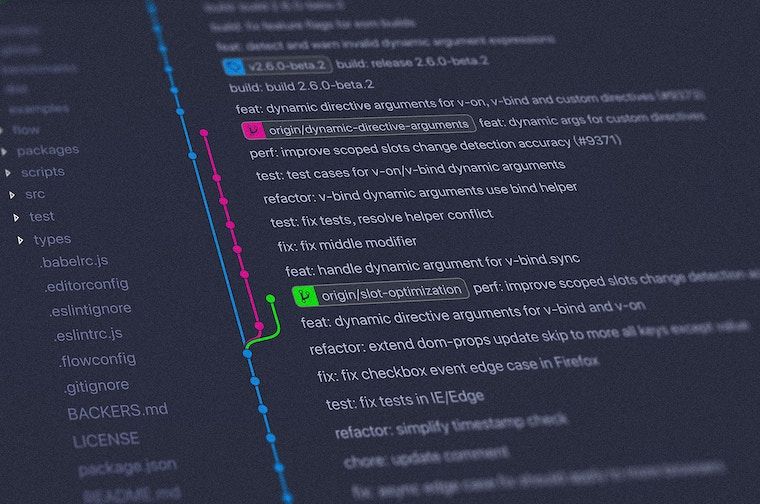
Default: false
--progress=true|false: Log progress to the console while building.
--resourcesOutputPath= resourcesOutputPath: The path where style resources will be placed, relative to outputPath.
--serviceWorker=true|false: Generates a service worker config for production builds. Default: false
--showCircularDependencies=true|false: Show circular dependency warnings on builds. Default: true
--sourceMap=true|false: It is used to show Output sourcemaps.
Default: true
--statsJson=true|false: It generates a 'stats.json' file which can be analyzed using tools such as: 'webpack-bundle-analyzer' or https://webpack.github.io/analyse.
Default: false
--subresourceIntegrity=true|false: It enables the use of subresource integrity validation.
Default: false
--tsConfig=tsConfig: The full path for the TypeScript configuration file, relative to the current workspace.
--vendorChunk=true|false: It uses a separate bundle containing only vendor libraries.
Default: true
--verbose=true|false: It adds more details to output logging.
Default: false
--watch=true|false: It runs build when files change.
Default: false
ng config Command
The ng config command is used to retrieve or set Angular configuration values in the angular.json file for the workspace.
Syntax:
Parameter Explanation:
<jsonPath>: The configuration key to set or query, in JSON path format. For example: 'a[3].foo.bar[2]'. If no new value is provided, returns the current value of this key.
<value>: If provided, a new value for the given configuration key.
Options
--global=true|false: When true, it accesses the global configuration in the caller's home directory.
Default: false
Aliases: -g
--help= true|false|json|JSON: It is used to show a help message for this command in the console.
Default: false
ng doc Command
The ng doc command is used to open the official Angular documentation (angular.io) in a browser, and searches for a given keyword.
Syntax:
Parameter Explanation:
<keyword>: It is used to specify the keyword to search for, as provided in the search bar in angular.io.
Options
--help=true|false|json|JSON: It is used to show a help message for this command in the console.
Default: false--search=true|false: When true, it searches all of angular.io. Otherwise, searches only API reference documentation.
Default: false
Aliases: -s
ng e2e Command
It is used to build and serve an Angular app, then runs end-to-end tests using Protractor.
Syntax:
It must be executed from within a workspace directory. When you don't specify the project name, it executes for all projects.
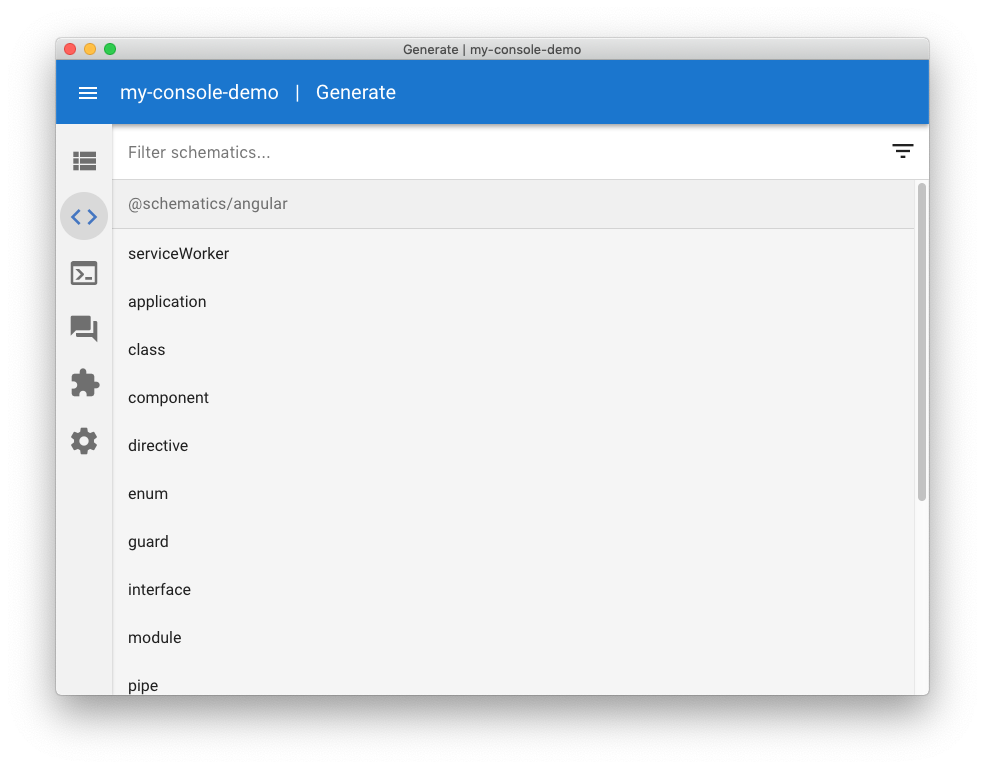
Parameter Explanation:
<project>: It specifies the name of the project you want to build. It can be an app or a library.
Options
--baseUrl=baseUrl: It specifies the base URL for protractor to connect to.
--configuration=configuration: It is used to specify named build target, as specified in the 'configurations' section of angular.json. Each named target is accompanied by a configuration of option defaults for that target.
Aliases: -c
--devServerTarget=devServerTarget: It specifies dev server target to run tests against.
--elementExplorer=true|false: It starts Protractor's Element Explorer for debugging.
Default: false
--help= true|false|json|JSON: It shows a help message for this command in the console.
Default: false
--host=host: Host to listen on.
Default: localhost
--port: It specifies the port to serve the application.
--prod=true|false: When true, it sets the build configuration to the production target. All builds make use of bundling and limited tree-shaking. A production build also runs limited dead code elimination.
--protractorConfig= protractorConfig: It specifies the name of the Protractor configuration file.
--specs: It overrides specs in the protractor config.
--suite=suite: It overrides suite in the protractor config.
--webdriverUpdate=true|false: It is used to update webdriver.
Default: true
ng generate Command
The ng generate command is used to generate and/or modify file based on schematic.
Parameter Explanation:
<schematic >: It specifies the schematic or collection:schematic which you want to generate. It can take one of the following sub-commands.
Angular Command Line
- appShell
- application
- class
- component
- directive
- enum
- guard
- interface
- library
- module
- pipe
- service
- serviceWorker
- universal
Schematic Command Explanation
appShell:
It is used to generate an app shell for running a server-side version of an app.
Syntax:
application
It is used to create a new basic app definition in the 'projects' subfolder of the workspace.
Syntax:
class
It is used to create a new generic class definition in the given or default project.
Syntax:
component
It is used to create a new generic component definition in the given or default project.
Syntax:
directive
It is used to create a new generic directive definition in the given or default project.
Syntax:
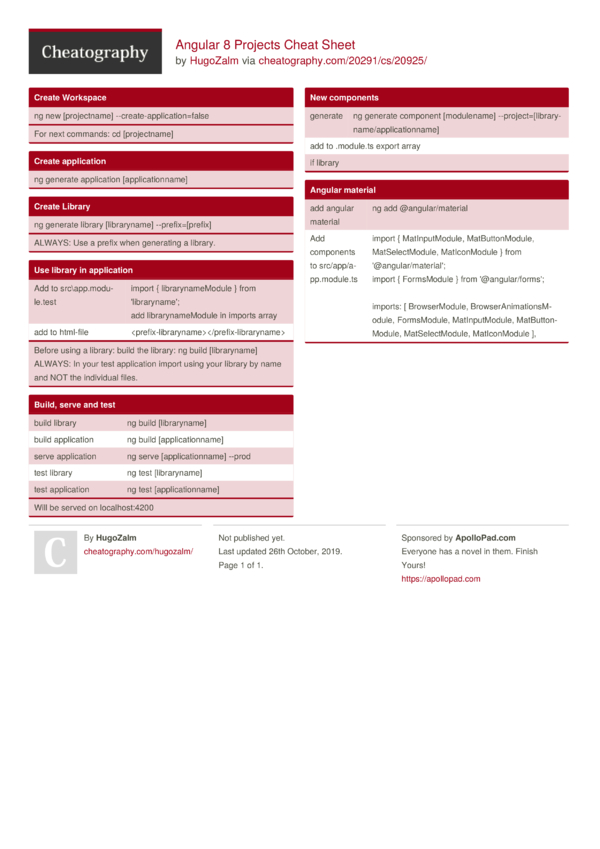
enum
It is used to create a new, generic enum definition for the given or default project.
Syntax:
enum
It is used to create a new, generic enum definition for the given or default project.
Syntax:
guard
It is used to generate a new, generic route guard definition in the given or default project.
Syntax:
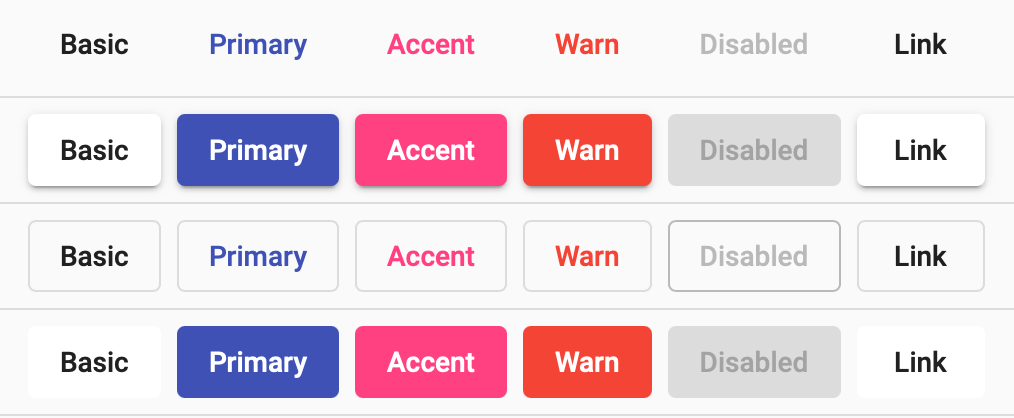
interface
It is used to create a new generic interface definition in the given or default project.
Syntax:
library
It is used to create a new generic library project in the current workspace.
Syntax:
module
It is used to create a new generic NgModule definition in the given or default project.
Syntax:
pipe
It is used to create a new generic pipe definition in the given or default project.
Syntax:
service
It is used to create a new, generic service definition in the given or default project.
Syntax:
serviceWorker
This is used to pass this schematic to the 'run' command to create a service worker.
Syntax:
universal
This command is used to pass this schematic to the 'run' command to set up server-side rendering for an app.
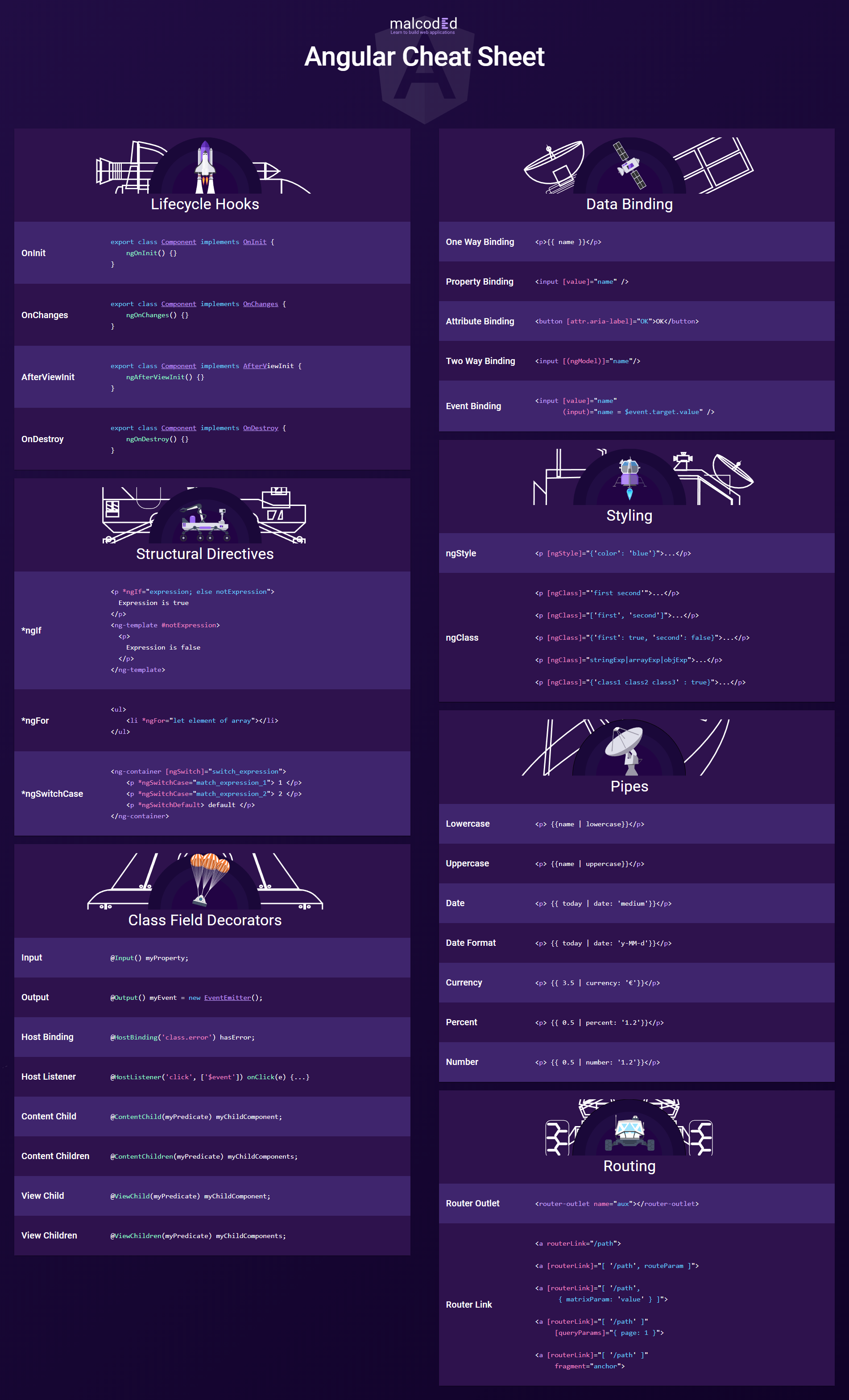
Syntax:
Angular Commands Cheat Sheet Free
Options
--defaults=true|false: When true, it disables interactive input prompts for options with a default.
--dryRun=true|false: When true, it runs through and reports activity without writing out results.
Default: false
Yahoo Fantasy Football Cheat Sheets
Aliases: -d
--force=true|false: When true, it forces overwriting of existing files.
Default: false
Angular Cheat Sheet Pdf
Aliases: -f
--help=true|false|json|JSON: It is used to show a help message in the console.
Default: false
--interactive=true|false: When false, it disables interactive input prompts.
Angular Commands Cheat Sheet Pdf




